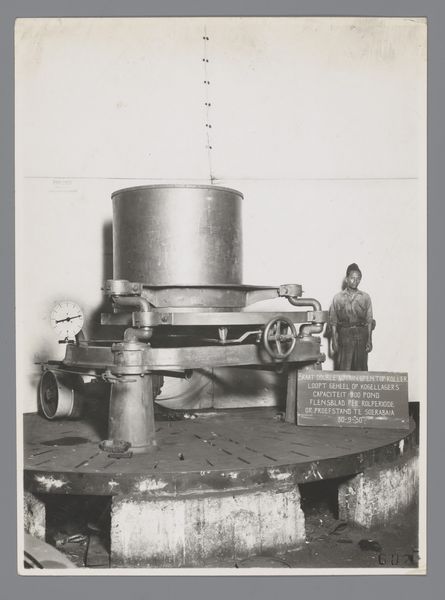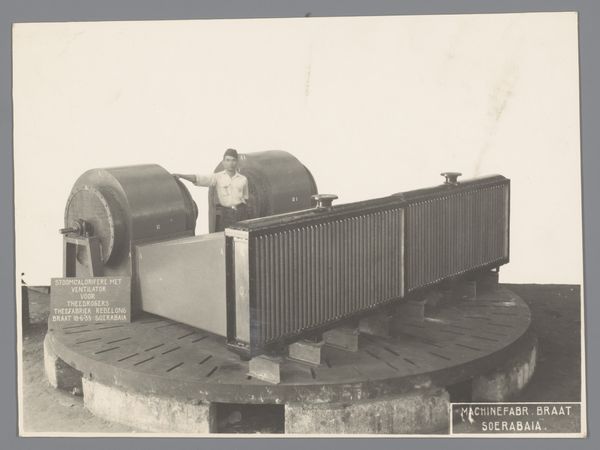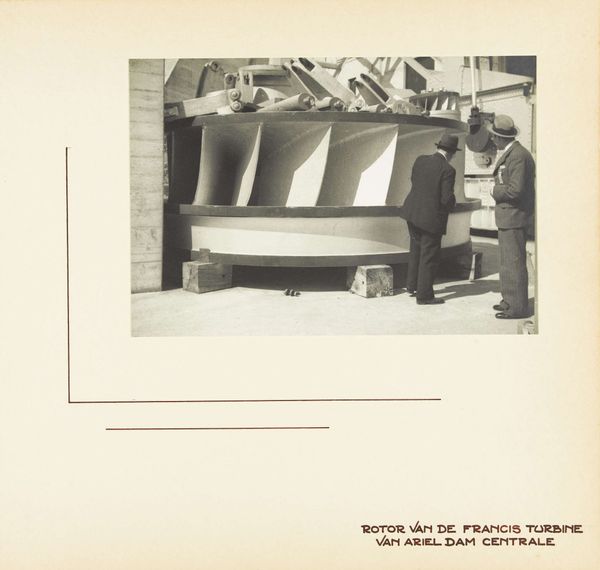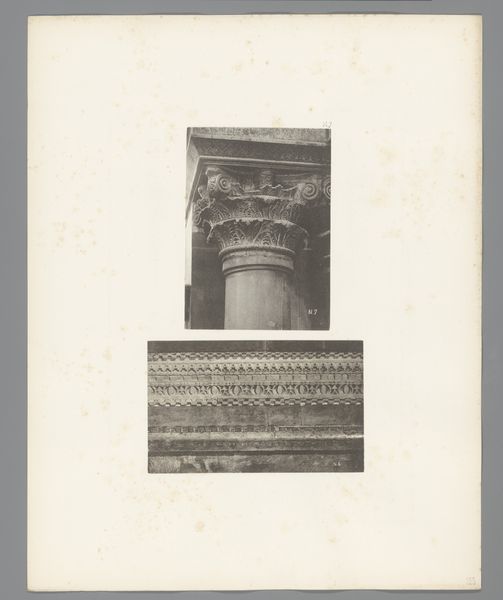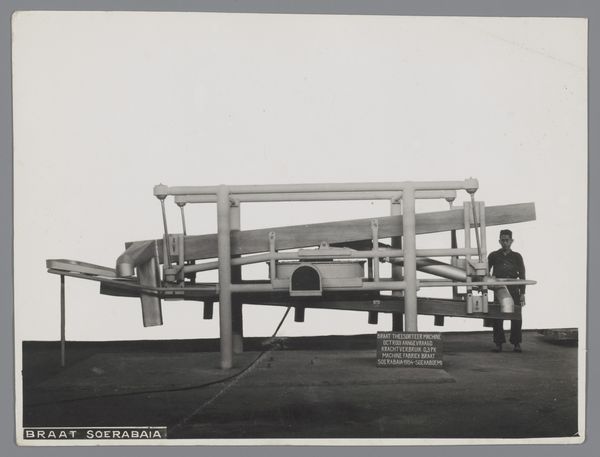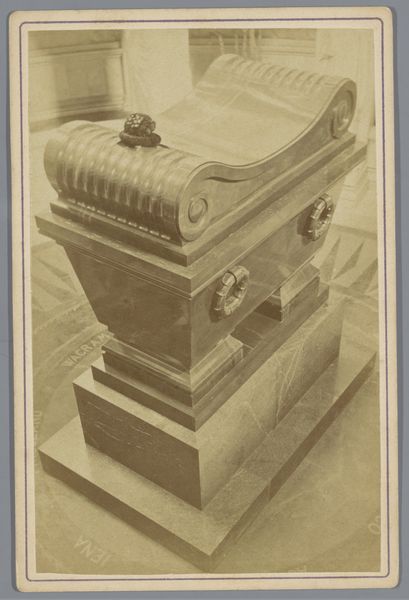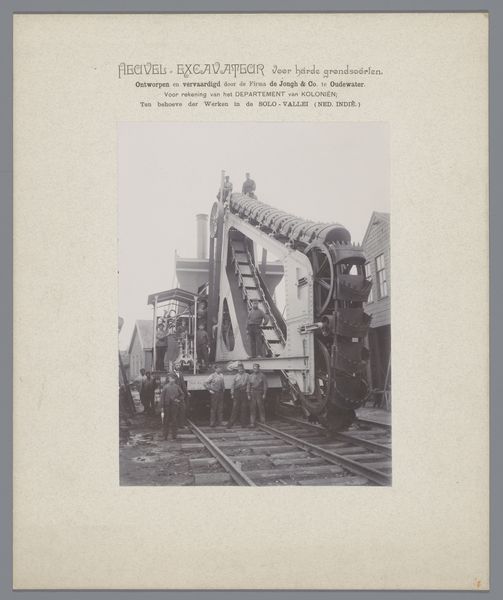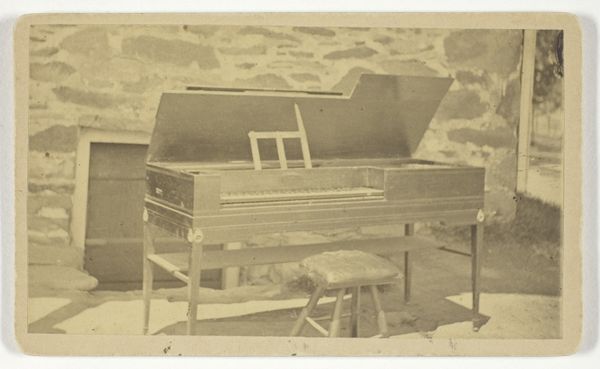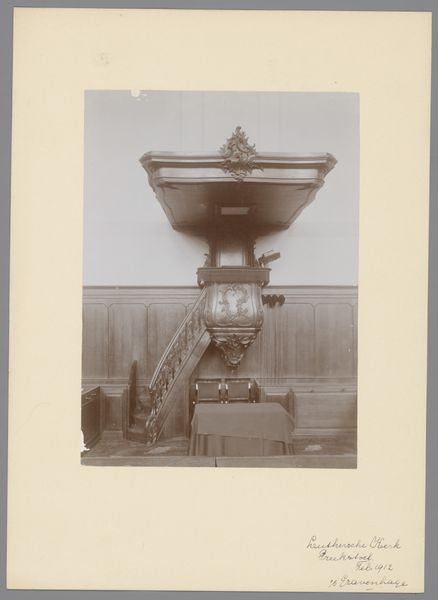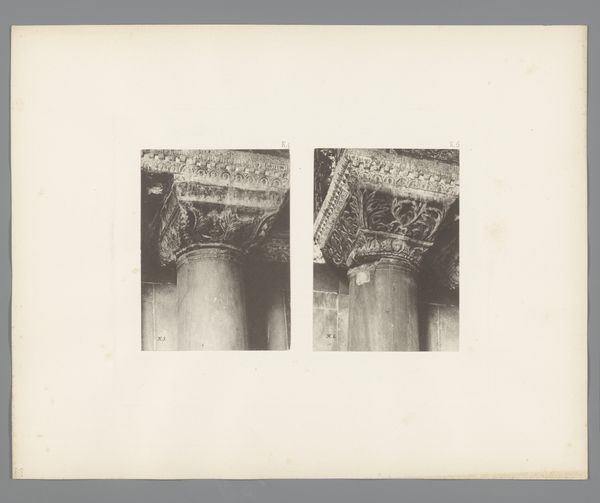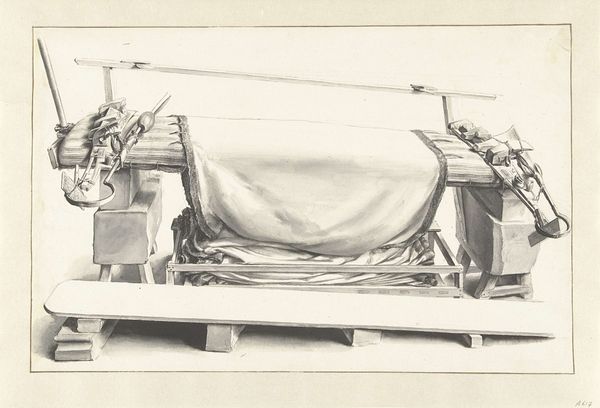
photography, gelatin-silver-print
#
archive photography
#
photography
#
historical photography
#
gelatin-silver-print
#
history-painting
#
modernism
Dimensions: height 235 mm, width 172 mm
Copyright: Rijks Museum: Open Domain
Editor: Here we have an intriguing gelatin-silver print from 1930, "Ampasstookinrichting," by an anonymous photographer, found in the Rijksmuseum collection. It portrays a large, metallic machine with the stark angles so popular during modernism, with some factory worker standing at its side. Its almost surreal industrial presence leaves me wondering about the broader story of labour it represents. How would you interpret its historical significance? Curator: That's a great question. Looking at this image, I see a confluence of factors shaping early 20th-century society. This isn't just a picture of a machine, but a document reflecting the increasing mechanization of labour, in factories, particularly concerning dangerous elements, like ampas, waste products. Do you notice how the signage in the foreground lists "S.F.Petardekan"? This is probably from a time before more controlled industry practices. The artist remains anonymous perhaps reflecting society's view of laborers at that time. Editor: That's insightful! The anonymity really drives home that point about societal views and the shift towards mechanization, prioritizing production over individual recognition. Curator: Precisely. The visual language also plays a crucial role. The stark, almost sterile aesthetic and emphasis on functionality also highlights the relationship with modernist principles but also serves to dehumanize labor and exalt machinery. How do you think viewers, then and now, might perceive this dynamic? Editor: I see what you mean. Then, I wonder if it felt progressive and a little cold. Today, though, knowing what we do about labour exploitation and worker's rights, it feels critical, even unsettling. It prompts us to reflect on both technological advancement and its human cost. Curator: Exactly. This seemingly simple image offers a complex dialogue between industrial progress, social anonymity, and the politics embedded in visual representation. What are your take-aways about labor's imagery and the context around it? Editor: I see that images, even simple records like these, carry important, but easily overlooked commentary of the society and times it exists in. Thank you. Curator: Thank you, this new view, emphasizing context over appearance has really informed the way that I am going to view archive works in the future.
Comments
No comments
Be the first to comment and join the conversation on the ultimate creative platform.
